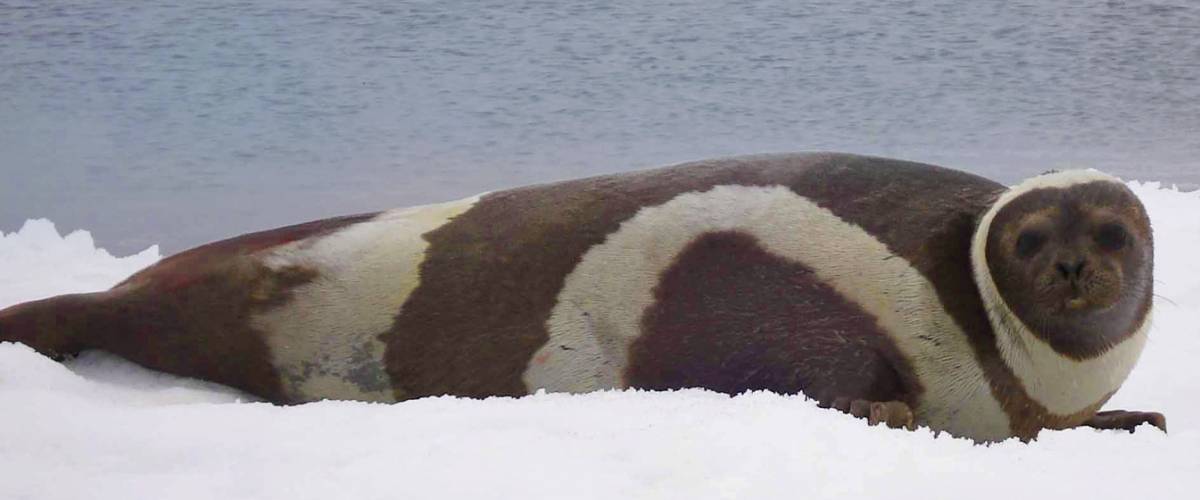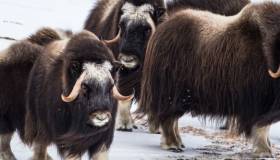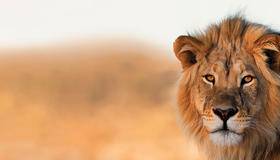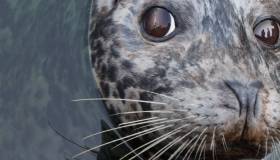
January 7, 2020 – Global climate change is impacting the lives of people around the world, from more severe weather events to increasing wildfire risk, rising and acidifying oceans, historical droughts and more. But it also is having immediate and long-term effects on the animals that share our planet - effects that are negatively impacting the health of animals globally, and increasing the risk of extinction for vulnerable species. The Arctic has become a living laboratory to see what those impacts mean.
A degree or two of warmer weather for a longer period of time can let organisms thrive in places where they may not have thrived before. While you might not be immediately aware of these changes out your front door, for people who live and work in the Arctic, changes in disease patterns are alarmingly evident in native wildlife. They are seeing its effect on seals, otters, muskoxen and caribou.
New Disease Expressways
Dr. Tracey Goldstein, Morris Animal Foundation-funded researcher at the University of California, Davis, and a Wildlife Scientific Advisory Board member for the Foundation, has been studying an emerging disease in marine mammals in the northern Pacific Ocean. In 2007, the Foundation supported Dr. Goldstein’s work looking into the sharp decline of northern sea otters along the coast of Alaska, especially evident in the Aleutian Islands.
Her team discovered that sea otters were being exposed to phocine distemper virus (PDV), a virus related to canine distemper in dogs and measles in humans. What made this finding unusual was PDV was thought to be isolated to the Atlantic Ocean. Findings from Dr. Goldstein’s recent study published in Nature focused on how the virus made its way to the Pacific.
“In 2002, a PDV outbreak in Europe killed about 30,000 harbor seals in the north Atlantic,” said Dr. Goldstein. “The strain we detected first in northern sea otters, and now in stellar sea lions and several seal species in the Pacific Ocean, is a close match to the virus that caused that outbreak. Comparing sea ice to previous years revealed routes between the Atlantic and Pacific had opened up along the Russian Arctic. We suspected melting sea pack created a new route for animals to move and come in contact with species that may not have been likely before, and bring with them a new virus.”
As part of their study, Dr. Goldstein and her team asked if it was possible for PDV-infected seals to travel the long distance through the Bering Strait to reach other Pacific animals and transmit the virus. To test their theory, they tracked movements of seals and sea lions fitted with telemetry collars to see if a PDV-infected animal may be able to travel far enough to come in contact with other species. Sure enough, the data supported their hypothesis that this may be possible.
“Our work found the movement of the virus was likely due to changes in seal movement resulting from openings in the sea ice caused by climate change,” said Dr. Goldstein. “This allowed the seals to carry the virus to a new region where the virus had never been seen before. We don’t yet know what effects the virus may have on sea otters and other species that had never been exposed to PDV.”
Land Mammal Declines
Changes in climate and disease patterns also are affecting Arctic and subarctic landscapes. Dr. Susan Kutz, Morris Animal Foundation-funded researcher at the University of Calgary, Canada, and her team have been studying a bacterium, usually found in pigs and poultry, now responsible for widespread declines in muskox and caribou herds.
“We believe this bacterium has been in the Arctic before, but perhaps not the exact strain,” said Dr. Kutz. “It has caused large scale mortalities in what used to be two of the world’s biggest muskox herds. What we do know about the bacteria is that it can kill stressed animals quite quickly. We are now studying the health toll on muskox herds related to stressors caused by climate change.”
Dr. Kutz’s team are collecting samples of blood and qiviut (dense wool undercoat) from muskoxen. The blood samples help them monitor for disease, the hair samples allow them to monitor trace minerals, including copper and zinc. If the animals don’t have enough of these minerals, they will die. They’ve also developed a test to screen muskoxen for the bacterium that is wiping out herds. They are now using the test to monitor seals, polar bears, caribou and moose.
“Many of the diseases we are seeing today in the Arctic may have always been there in some form,” said Dr. Kutz. “However, the warmer temperatures allow bacterial and parasitic pathogens to live longer and thrive in places that may have been impossible just a few decades ago.”
One example is a parasitic lungworm in muskoxen. Dr. Kutz began studying the spread of lungworm in muskoxen 25 years ago. At that time, this was a disease threat usually confined to the subarctic mainland. Over the years, Dr. Kutz has seen the lungworm expand its range northward into Arctic islands, adding just one more stressor to muskoxen.
“One or two degrees of temperature change makes all the difference in the lifecycle of the lungworm,” said Dr. Kutz. “A longer and warmer season is allowing the lungworm to thrive and grow in muskoxen in areas that were previously unaffected by this parasite. With climate change, lungworms are now able to complete their reproductive lifecycle in one year instead of two, leading to higher levels of infection which may have a more severe impact on the animals.”
Broader Impacts
Researchers believe that thousands of muskoxen died over a very short time period due to the combined impacts of stress and infectious disease. These animals have very little genetic diversity, having gone through two historic die-offs, the most recent in the early 1900s due to overhunting. When animals lose genetic diversity, this weakens their overall immunity defenses and makes them more vulnerable to disease outbreaks. The news, however, gets worse.
“The permafrost is thawing and rapidly changing the terrestrial landscape,” said Dr. Kutz. “And we don’t quite know what type of organisms will be released with the thawing and if these organisms are pathogenic or not; if they will cause disease. Researchers are working hard to figure out what might thaw out of the permafrost.”
Dr. Kutz’s worry is that muskoxen are grazers. They have their noses down to the ground looking for food. If there are viable organisms released during permafrost thawing, the muskoxen may be some of the first animals to be exposed and affected. Dr. Kutz refers to muskoxen as the Arctic version of canaries in the coal mine.
More Than an Arctic Problem
Both Drs. Goldstein and Kutz note we are seeing diseases in places besides the Arctic where those diseases traditionally have not been documented before. In the oceans, Dr. Goldstein points to the growing problem of toxic algae blooms off the coasts of California and Florida that sicken and often kill sea lions, dolphins, sea turtles and manatees.
The warming of oceans also is changing food chains and availability. Dr. Goldstein notes in some years California sea lions need to go farther and farther out to find food, leaving pups on shore waiting longer for their next meal. Rescue groups are seeing more starving sea lion pups when that happens. In the Arctic, Dr. Kutz notes killer whales are taking advantage of now ice-free oceans to prey on narwhal and beluga whales – species not traditionally hunted by killer whale – new predation that will certainly have a detrimental effect on these species.
On land, both Drs. Goldstein and Kutz note we are seeing changes in the spread of disease carriers, such as mosquitos. Diseases like dengue fever are expanding to new places as the mosquitos that carry the virus can now thrive in areas that they could not thrive before.
“Climate change is a very complex issue, with a lot of factors at play,” said Dr. Goldstein. “People need to know that whatever is happening in the environment affects both wildlife and humans. For now, we still have a lot to learn about how climate change will impact shifts in disease patterns around the world, but we are working on it.”
Photo: Adult male ribbon seal on the ice – Credit: NOAA Fisheries, Polar Ecosystems Program, AFSC.



